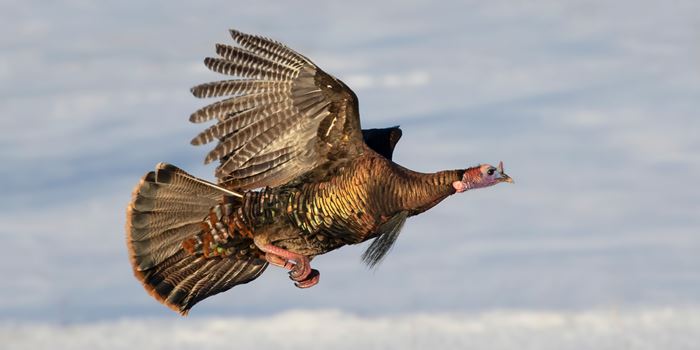Flying Turkeys

By Karen Menard
Wild turkeys don’t always explore their world on foot, they can also fly.
Soaring for short bursts just below the tree canopy, these big birds will rarely soar beyond 100 yards, but can reach amazing speeds, up to 55 mph. Not only fast on the wing, these fleet-footed fowl can propel themselves across the land at 25 Mph!
Most of the time, though, wild turkeys can be seen just wandering around foraging for seeds, fruits, berries and insects. Having excellent daytime vision, these birds are able to view the colors of their food choices and see them three times better than humans.
Metroparks forested and edge habitats offer wild turkeys an abundance of food items such as acorns, hickory nuts, beechnuts, walnuts and wild grape, making turkeys easy to see throughout the seasons in many of the parks. On average, a 15 pound turkey will eat approximately five pounds of food per week, so this species often stays near sites that consistently offer its favorite edibles.
On your next fall or winter visit to a Metropark, watch closely for single turkeys or a feeding flock. This time of year, these beautiful animals are easy to see and hear strutting across the fallen leaves.
Once missing from the Ohio landscape, wild turkey have now been reintroduced in all 88 counties of the state. In Ohio, the first birds were released at Oak Openings Preserve in 2000.
Object reference not set to an instance of an object.
Did You Know?
Turkeys ingest sand grains and gravel called “gastroliths,” which end up in their gizzard. These aid in the churning and crushing of ingested food items. Since turkeys don’t have teeth, the gizzard “chews” or breaks down the food to be digested.